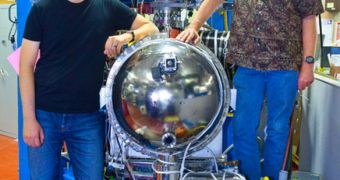Experts at the US Department of Energy's (DOE) Lawrence Berkeley National Laboratory (Berkeley Lab) announce the development of a new technology for scrutinizing the interior of electronic components, called Hard X-ray Angle-Resolved PhotoEmission Spectroscopy (HARPES).
This method is a variation of Angle-Resolved PhotoEmission Spectroscopy (ARPES), another study technique that has been used for this purpose for over three decades. The problem with this precursor is that it was only able to analyze interactions taking place at the surface.
As technology evolves, the focus of studies shifts from the surface of components such as semiconductors and superconductors to their inner structure, which ARPES cannot resolve clearly.
By developing HARPES, the Berkeley Lab team essentially provides physicists and electrical engineers with a means of understanding how interactions occur within commonly-used material that feature multiple layers.
In many such materials, the way their layers communicate and interact is key to their physical and chemical properties. As such, understanding how they work is key to improving them. But progress has been stalled years ago by the lack of an advanced viewing method.
Using the new approach, electronic structures can now be studies in bulk. “HARPES should enable us to study the electronic structure of any new material in the bulk, with minimum effects of surface reactions or contamination,” expert Charles Fadley explains.
“ur technique should also allow us to probe the buried layers and interfaces that are ubiquitous in nanoscale devices, and are key to smaller logic elements in electronics, novel memory architectures in spintronics, and more efficient energy conversion in such technologies as photovoltaic cells,” he adds.
The expert holds an appointment as a physicist at Berkeley Lab, and is also the leader of the HARPES development team. He works for the Lab’s Materials Sciences Division and is a Distinguished Professor of Physics at the University of California in Davis (UCD).
Details of the new work appear in a paper entitled “Probing bulk electronic structure with hard X-ray angle-resolved photoemission,” which is published in the latest issue of the top scientific journal Nature Materials.
“The key to probing the bulk electronic structure is using hard X-rays, which are X-rays with sufficiently high photon energies to eject photoelectrons from deep beneath the surface of a solid material,” adds UCD research group member Alexander Gray, the paper's corresponding author.
“High-energy photons impart high kinetic energies to the ejected photoelectrons, enabling them to travel longer distances within the solid. The result is that more of the signal originating from the bulk will be detected by the analyzer,” he concludes.

 14 DAY TRIAL //
14 DAY TRIAL //